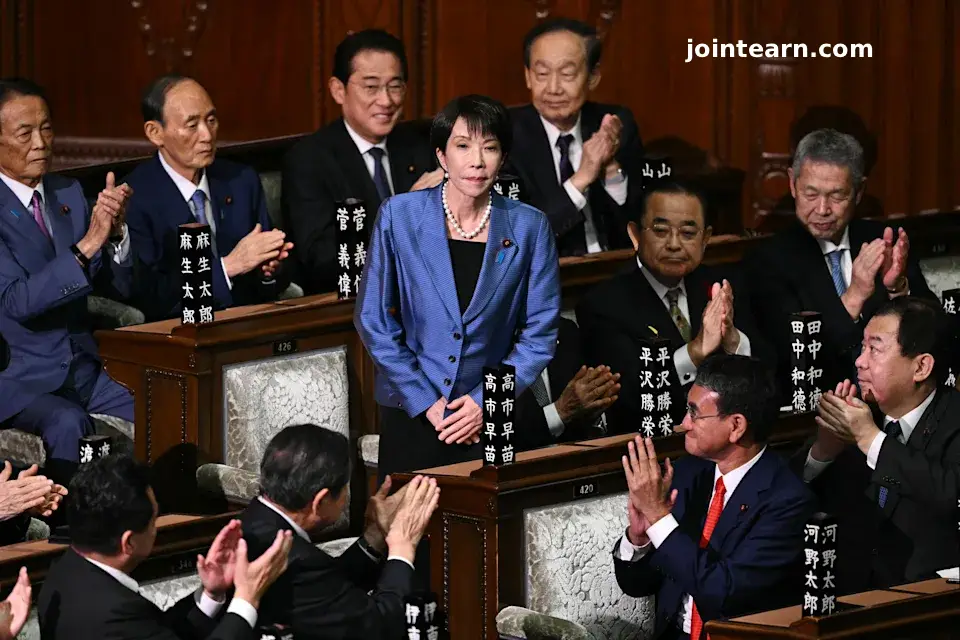
In a historic first for Japan, ultraconservative politician Sanae Takaichi was elected as the country’s first female prime minister on Tuesday, following a coalition deal that promises to shift her governing bloc further to the right. The announcement ends a three-month political vacuum after the Liberal Democratic Party (LDP) suffered a disappointing election loss in July.
Takaichi Wins Narrow Majority
Takaichi secured 237 votes in the lower house of parliament, just four votes above the majority, defeating Yoshikoko Noda of the Constitutional Democratic Party, who won 149 votes. Her premiership was secured through an alliance with the Osaka-based Japan Innovation Party (Ishin no Kai), while the opposition remains fragmented.
Despite the coalition, Takaichi’s alliance does not hold a majority in both houses, requiring negotiation with other parties to pass legislation. Analysts warn that this could make her government fragile and short-lived.
“Political stability is essential right now,” Takaichi said at Monday’s signing ceremony with Ishin no Kai leader and Osaka Governor Hirofumi Yoshimura. “Without stability, we cannot push measures for a strong economy or diplomacy.”
Rightward Shift in Policy
Takaichi’s election signals a shift to the right in Japanese politics, particularly on immigration, social policies, and national security. She faces public dissatisfaction over rising prices after years of deflation, boosting support for opposition groups like the far-right Sanseito party.
Addressing inflation and other economic concerns is a top priority. LDP Secretary General Shunichi Suzuki told NHK that the new coalition will work with other opposition parties to implement measures to stabilize prices and meet public expectations.
Coalition and Cabinet Formation
The coalition agreement emphasizes Takaichi’s hawkish and nationalistic views, following the LDP’s split from its longtime centrist partner, Komeito, which opposed Takaichi’s conservative stances and criticized her handling of slush fund scandals.
At 64, Takaichi is expected to appoint a Cabinet dominated by allies of Taro Aso, LDP’s most influential power broker, and other leadership supporters. The Japan Innovation Party will not hold ministerial posts initially, awaiting confidence in the coalition partnership.
Takaichi must also prepare for a major policy speech, diplomatic meetings with global leaders including President Donald Trump, and regional summits, all while addressing economic challenges before the year-end.
Views on Gender and Social Issues
Despite being Japan’s first female prime minister, Takaichi has not prioritized gender equality or diversity. She has historically opposed women’s advancement measures, same-sex marriage, and allowing separate surnames for married couples. She also supports the imperial family’s male-only succession.
A protégé of assassinated former Prime Minister Shinzo Abe and admirer of Margaret Thatcher, Takaichi is expected to emulate Abe’s policies on military expansion, economic growth, and potential constitutional revisions, though her government’s fragile standing may limit her achievements.
International Concerns
Takaichi’s ultraconservative and revisionist stances have caused friction with neighboring countries. Her regular prayers at Yasukuni Shrine, seen by Beijing and Seoul as lacking remorse for Japan’s wartime actions, drew criticism. While she has toned down her rhetoric, the international community remains cautious about her foreign policy approach.
The Road Ahead
Takaichi’s historic appointment marks a pivotal moment in Japanese politics. Her government faces immediate challenges in ensuring political stability, controlling inflation, and maintaining domestic and international confidence. Observers will closely watch whether Japan’s first female prime minister can consolidate power and implement her ambitious right-wing agenda.
Leave a Reply